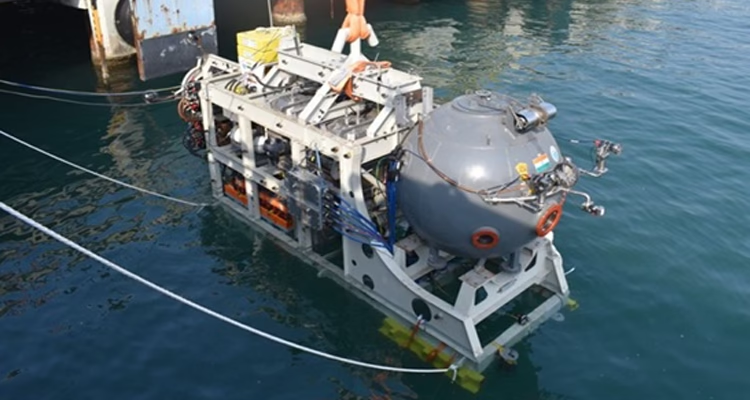
New Delhi: India’s National Institute of Ocean Technology (NIOT) has successfully developed the Matsya-6000, a fourth-generation deep-ocean submersible as part of the Samudrayan Project. The submersible recently completed its wet testing phase, marking a key achievement under India’s Deep Ocean Mission.
The Matsya-6000, designed to carry a crew of three, features a compact spherical hull with a diameter of 2.1 meters. This groundbreaking submersible is poised to advance India’s capabilities in ocean exploration.
Developed as part of the Indian government’s Deep Ocean Mission, the submersible incorporates a range of subsystems essential for its functionality. These include a ballast system for diving, thrusters for movement in all directions, a power-supplying battery bank, and syntactic foam to ensure buoyancy.
Additionally, the submersible is equipped with an advanced power distribution system, sophisticated control hardware and software, and cutting-edge underwater navigation devices. Its communication suite consists of an acoustic modem, underwater telephone, VHF for surface communication, and GPS for surface tracking, complemented by underwater positioning systems.
Inside, the submersible includes life-support systems, displays for environmental monitoring, navigation joysticks for ease of movement, and various oceanographic sensors. Underwater cameras and lighting are also integrated into the exterior.
The Matsya-6000’s design and components were entirely developed in India, with all systems undergoing rigorous testing and integration. After dry testing on a 500-meter operational range, the submersible was transported to the L&T Shipbuilding facility at Kattupalli Port near Chennai. There, from January 27 to February 12, 2025, wet tests were conducted to assess its performance in real-world conditions.
During the wet testing phase, the submersible’s power and control networks, flotation, stability, and human safety systems were evaluated. Additionally, its maneuverability, specifically forward and reverse motion, was tested, along with its navigation and communication capabilities. The scientific payloads, which included advanced oceanographic sensors, were also thoroughly assessed.
The wet test consisted of eight dives, including five unmanned and three manned dives, each of which underwent strict qualifications to ensure the reliability of life-support systems. Although underwater communication was less effective in the shallow harbour waters, the tests demonstrated significant progress toward achieving optimal performance at greater depths.
Looking ahead, the successful completion of the wet test has bolstered confidence in the Matsya-6000’s potential for shallow-water operations. Further testing at deeper depths, up to 500 meters, is scheduled for later in 2025.



